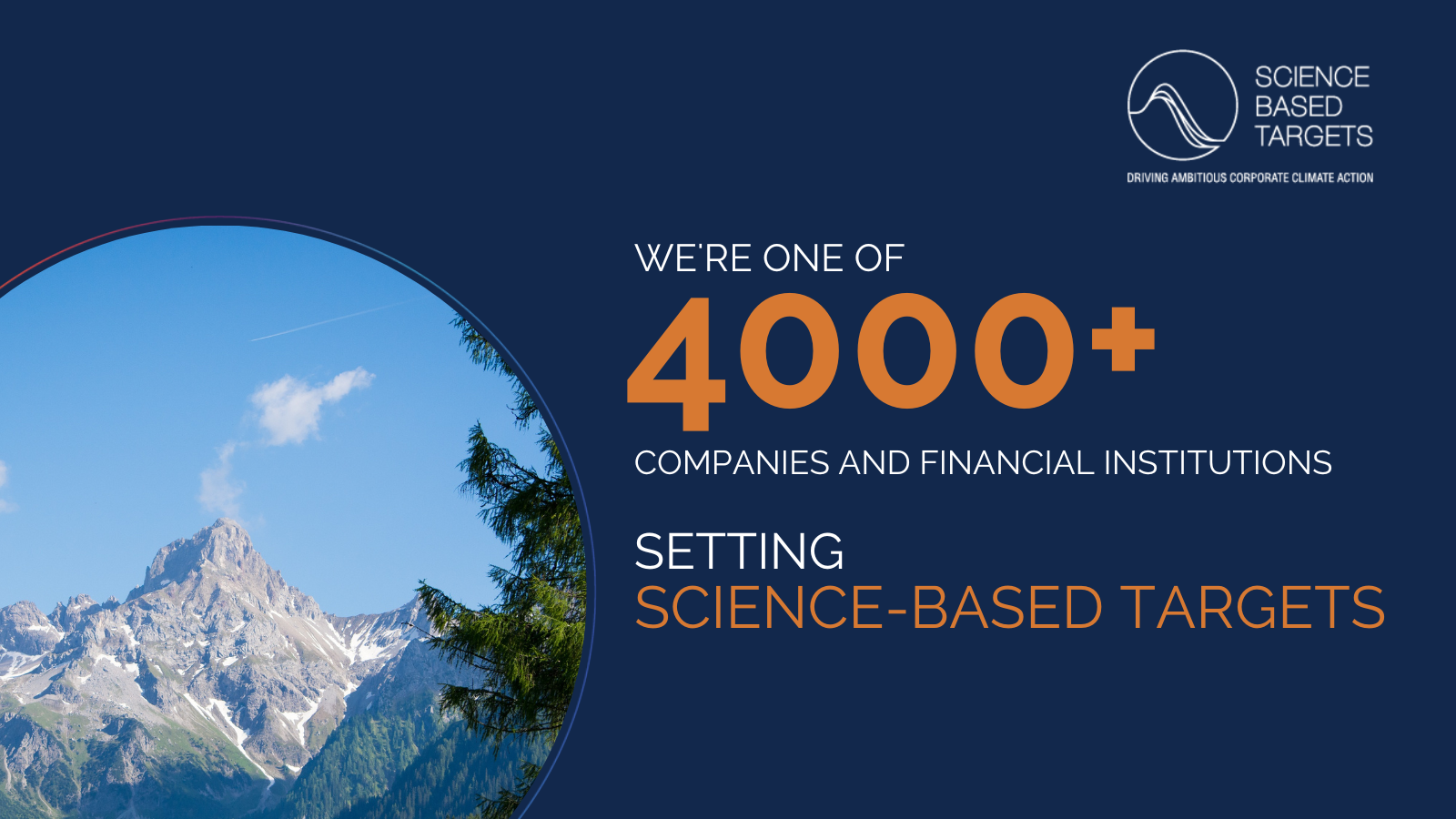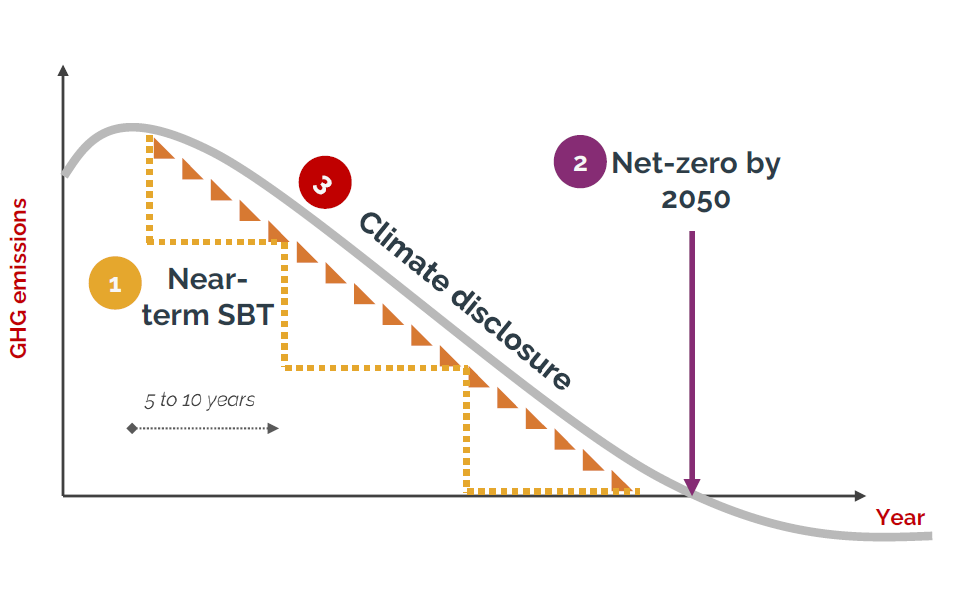Title: Topenergy Successfully Joins Science-Based Targets Initiative (SBTi)

Abstract
Joining SBTi is aimed at addressing climate change and advancing corporate sustainability. To ensure the scientific rigor and reliability of our targets, we have adhered to the standards and guidance provided by SBTi. To achieve our goals, we have developed short-term emission reduction strategies, including limiting vehicle usage, improving energy efficiency, promoting low-carbon transportation, and reducing business travel. Additionally, the company plans to set a 2050 Net-Zero Target, exploring innovative solutions to minimize our business's impact on the climate and achieve carbon neutrality.
Our Science-Based Targets(SBT)
On July 11, 2023, the SBTi has approved Topenergy’s near-term science-based emissions reduction target.
Topenergy commits to reduce scope 1 and scope 2 GHG emissions 42% by 2030 from a 2022 base year, and to measure and reduce its scope 3 emissions.
 Source:SBTi
Source:SBTi
Why We Set Science-Based Targets?
As a company specializing in providing low-carbon, energy-efficient, and certified consultancy services for buildings and businesses, we recognize the importance of addressing climate change and reducing greenhouse gas emissions. We believe that setting science-based targets is crucial for realizing our vision and taking leadership in the industry. Therefore, we decided to join SBTi and establish greenhouse gas reduction targets.
Joining SBTi is driven by our commitment to environmental responsibility and the promotion of corporate sustainability. By setting science-based targets, we aim to become leaders and practitioners in the industry, inspiring more businesses to follow our footsteps and drive the entire sector towards a more environmentally friendly and sustainable direction.
Ensuring the reliability and significance of our emission reduction targets, we followed SBTi's standards in establishing our goals. SBTi provides standards and guidance for setting greenhouse gas emission reduction targets, and by joining SBTi, we ensure that our targets are science-based, thereby ensuring the effectiveness and sustainability of our emission reduction efforts.
The Process of Joining SBTi
Topenergy emphasizes the involvement of all employees, who support the establishment of emission reduction targets and embrace the idea of significantly reducing greenhouse gas emissions.
Data Collection and Analysis: Topenergy established a dedicated working group comprising members from various departments to collect relevant data on the company's operational activities based on the GHG Protocol's classification of corporate greenhouse gas emissions. This includes data on company vehicle usage, energy consumption bills, employee travel and commuting data, waste data, etc., covering Scope 1, Scope 2, and Scope 3 emissions. Through comprehensive data collection and analysis, we ensured a solid and accurate data foundation for setting science-based targets.
Target Setting: In establishing our targets, we analyzed SBTi's near-term and net-zero targets, target-setting methods, and the company's own development context. Ultimately, we chose to set short-term targets that align with SBTi's 1.5°C trajectory.
Challenges Faced
During the process of setting science-based targets, we encountered some challenges and learned valuable lessons from them.
We realized that setting long-term targets requires considering various factors, including corporate development, market demands, and environmental impacts. Setting long-term targets in a short-term-oriented business environment, especially in a rapidly developing company, is challenging. Balancing long-term targets with short-term demands is a complex task. Additionally, we recognized the significance of Scope 3 emissions and the importance of collaboration with customers and supply chains in achieving our goals.
Future Plans - Emission Reduction Strategies
We will implement the following measures to achieve our science-based targets, including but not limited to:
1. Corporate Owned Vehicles: Establishing a policy for company vehicle usage, limiting unnecessary use of fuel-powered vehicles to reduce emissions.
2. Energy Efficiency: Improving energy efficiency in office spaces, conducting energy audits, optimizing air conditioning, lighting, and equipment energy consumption to reduce energy usage and greenhouse gas emissions.
3. Green Commuting: Implementing an employee commuting policy, encouraging the use of public transportation, walking, cycling, and other low-carbon commuting methods to reduce individual transportation emissions.
4. Optimize Business Travel: Creating a travel policy to reduce unnecessary business travel, encouraging the use of online meeting tools, and planning travel efficiently to reduce emissions from business trips.
5. Enhanced Monitoring: Continuously collecting and monitoring data on company activities to track and evaluate progress toward our targets, enabling timely adjustments and improvements to our emission reduction strategies.
Future Plans - Setting Net-Zero Target
To achieve broader greenhouse gas reductions, we are considering setting our 2050 Net-Zero Target based on the SBTi Corporate Net-Zero Standard. This will include further emission reduction measures and exploring innovative solutions to minimize our business's impact on climate change.
Through the implementation of these measures, we will continuously advance our greenhouse gas reduction efforts, ensuring the effective execution of our targets, and actively addressing climate change while making sustainable progress towards achieving carbon neutrality.
 Source:SBTi
Source:SBTi
 NEED SUGGESTIONS CONTACT WITH US >>
NEED SUGGESTIONS CONTACT WITH US >>











Copyright © 2015-2023达实德润 京ICP备16020153号-1